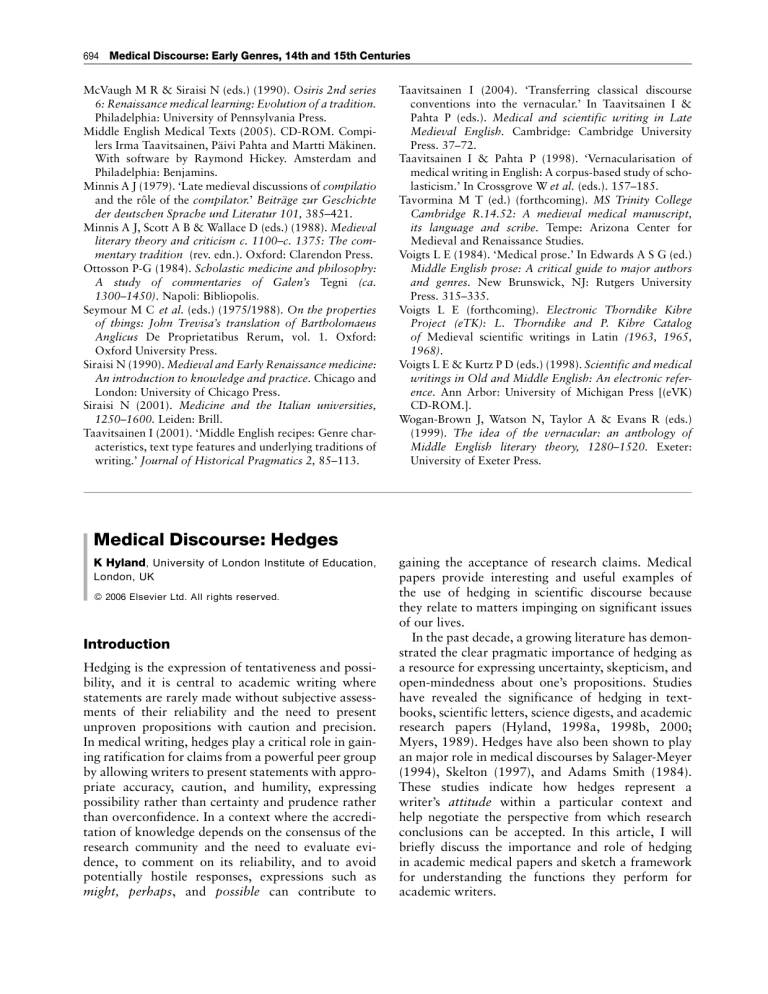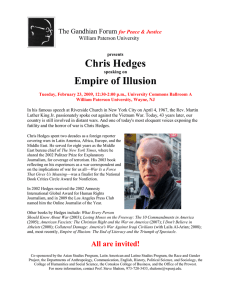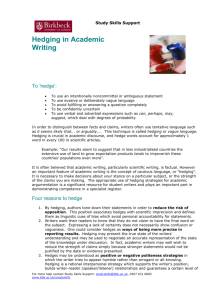
694 Medical Discourse: Early Genres, 14th and 15th Centuries McVaugh M R & Siraisi N (eds.) (1990). Osiris 2nd series 6: Renaissance medical learning: Evolution of a tradition. Philadelphia: University of Pennsylvania Press. Middle English Medical Texts (2005). CD-ROM. Compilers Irma Taavitsainen, Päivi Pahta and Martti Mäkinen. With software by Raymond Hickey. Amsterdam and Philadelphia: Benjamins. Minnis A J (1979). ‘Late medieval discussions of compilatio and the rôle of the compilator.’ Beiträge zur Geschichte der deutschen Sprache und Literatur 101, 385–421. Minnis A J, Scott A B & Wallace D (eds.) (1988). Medieval literary theory and criticism c. 1100–c. 1375: The commentary tradition (rev. edn.). Oxford: Clarendon Press. Ottosson P-G (1984). Scholastic medicine and philosophy: A study of commentaries of Galen’s Tegni (ca. 1300–1450). Napoli: Bibliopolis. Seymour M C et al. (eds.) (1975/1988). On the properties of things: John Trevisa’s translation of Bartholomaeus Anglicus De Proprietatibus Rerum, vol. 1. Oxford: Oxford University Press. Siraisi N (1990). Medieval and Early Renaissance medicine: An introduction to knowledge and practice. Chicago and London: University of Chicago Press. Siraisi N (2001). Medicine and the Italian universities, 1250–1600. Leiden: Brill. Taavitsainen I (2001). ‘Middle English recipes: Genre characteristics, text type features and underlying traditions of writing.’ Journal of Historical Pragmatics 2, 85–113. Taavitsainen I (2004). ‘Transferring classical discourse conventions into the vernacular.’ In Taavitsainen I & Pahta P (eds.). Medical and scientific writing in Late Medieval English. Cambridge: Cambridge University Press. 37–72. Taavitsainen I & Pahta P (1998). ‘Vernacularisation of medical writing in English: A corpus-based study of scholasticism.’ In Crossgrove W et al. (eds.). 157–185. Tavormina M T (ed.) (forthcoming). MS Trinity College Cambridge R.14.52: A medieval medical manuscript, its language and scribe. Tempe: Arizona Center for Medieval and Renaissance Studies. Voigts L E (1984). ‘Medical prose.’ In Edwards A S G (ed.) Middle English prose: A critical guide to major authors and genres. New Brunswick, NJ: Rutgers University Press. 315–335. Voigts L E (forthcoming). Electronic Thorndike Kibre Project (eTK): L. Thorndike and P. Kibre Catalog of Medieval scientific writings in Latin (1963, 1965, 1968). Voigts L E & Kurtz P D (eds.) (1998). Scientific and medical writings in Old and Middle English: An electronic reference. Ann Arbor: University of Michigan Press [(eVK) CD-ROM.]. Wogan-Brown J, Watson N, Taylor A & Evans R (eds.) (1999). The idea of the vernacular: an anthology of Middle English literary theory, 1280–1520. Exeter: University of Exeter Press. Medical Discourse: Hedges K Hyland, University of London Institute of Education, London, UK ß 2006 Elsevier Ltd. All rights reserved. Introduction Hedging is the expression of tentativeness and possibility, and it is central to academic writing where statements are rarely made without subjective assessments of their reliability and the need to present unproven propositions with caution and precision. In medical writing, hedges play a critical role in gaining ratification for claims from a powerful peer group by allowing writers to present statements with appropriate accuracy, caution, and humility, expressing possibility rather than certainty and prudence rather than overconfidence. In a context where the accreditation of knowledge depends on the consensus of the research community and the need to evaluate evidence, to comment on its reliability, and to avoid potentially hostile responses, expressions such as might, perhaps, and possible can contribute to gaining the acceptance of research claims. Medical papers provide interesting and useful examples of the use of hedging in scientific discourse because they relate to matters impinging on significant issues of our lives. In the past decade, a growing literature has demonstrated the clear pragmatic importance of hedging as a resource for expressing uncertainty, skepticism, and open-mindedness about one’s propositions. Studies have revealed the significance of hedging in textbooks, scientific letters, science digests, and academic research papers (Hyland, 1998a, 1998b, 2000; Myers, 1989). Hedges have also been shown to play an major role in medical discourses by Salager-Meyer (1994), Skelton (1997), and Adams Smith (1984). These studies indicate how hedges represent a writer’s attitude within a particular context and help negotiate the perspective from which research conclusions can be accepted. In this article, I will briefly discuss the importance and role of hedging in academic medical papers and sketch a framework for understanding the functions they perform for academic writers. Medical Discourse: Hedges 695 Hedging and the Construction of Knowledge Hedging has been a subject of interest to linguists since Lakoff (1972) first used the term to describe ‘words whose job it is to make things more or less fuzzy.’ Essentially, it represents an absence of certainty and is used to describe ‘any linguistic item or strategy employed to indicate either a) a lack of commitment to the truth value of an accompanying proposition or b) a desire not to express that commitment categorically’ (Hyland, 1998a: 1). The importance of hedging lies in the fact that transforming claims into accredited knowledge requires reader acceptance and therefore linguistic and rhetorical means of persuasion. Academic knowledge is now generally acknowledged to be a social accomplishment, the outcome of a cultural activity constituted by agreement between a writer and a potentially skeptical discourse community. As a result, the research paper is a rhetorically sophisticated artifact, carefully crafted to display a careful balance of factual information and social interaction, set out using community-recognized and -accepted argument forms. Academic writers need to make the results of their research not only public, but also persuasive, and this involves them carefully weighing claims for the significance and plausibility of their work against the convictions and expectations of their readers. Successful academic writing, in other words, involves authors evaluating their material and acknowledging alternative views because all statements require ratification. This, at least in part, depends on the appropriate use of various rhetorical and interactive features, of which hedges are among the most important. These examples show how hedges can modify the factual status of a proposition to suggest that it is based on imperfect reckoning rather than certainty. provide an idea of how this is often achieved. The hedges (italicized) indicate interpretations and allow writers to convey their attitude about the truth of the statements they accompany, thereby presenting unproven claims with prudence and softening categorical assertions. More than this, however, hedges open a discursive space in which readers are able to dispute the writer’s arguments and interpretations, thereby enabling writers to take a position with respect to an audience as well as to facts. The Functions of Hedging Although medical research scientists gain and retain their academic credibility by securing readers’ acceptance of the most significant claims that their findings will support, such strong claims are risky. Few assertions in the scientific world survive for long before being replaced by those with greater explanatory efficacy and there is always the possibility that claims will contradict or challenge the beliefs of one’s peers. The fact that readers are able to reject claims means they have an active and constitutive role in how writers construct them, and it is the writer’s anticipation of this potential opposition that makes hedging central to academic writing. This opposition can be divided into two types and claims must address these to stand any chance of success. First, claims must correspond with what is believed to be true in the world. Hedges here are ‘content-oriented’ and concern the relationship between a proposition and a representation of reality. At a further level of delicacy, we can distinguish the obligation on writers to present their claims as accurately as possible and the equally pressing need to anticipate the dangers of overstatement. Second, a proposition that could be presented categorically from an objective perspective may be explicitly hedged because of reader considerations. Thus, ‘reader-oriented hedges’ incorporate an awareness of interpersonal factors. It is often difficult to pin down precisely what the writer intends, as indeterminacy is a widely recognized feature of modal semantics. However, although there is inevitably some overlap, it is useful to conceptually distinguish these three broad functions to understand the roles that hedges play in academic discourse and readers’ motivations for employing them (Hyland, 1998a). First, hedges allow writers to express propositions with greater precision in areas often characterized by rapid reinterpretation. Hedging here is an important means of attesting to the degree of precision or reliability of a claim and accurately stating uncertain statements with appropriate caution. In medicine, writing is necessarily a balance of fact and evaluation as the writer tries to present information as fully, accurately, and objectively as possible. Thus, writers often say ‘X may cause Y’ rather than ‘X causes Y’ to specify the actual state of knowledge on the subject. Hedges here distinguish the actual from the potential, or the known from the inferential, and imply that a proposition is based on the writer’s plausible reasoning rather than certain knowledge. Readers are expected to understand that the proposition is true as far as can be determined. The second reason for using hedges concerns the writer’s desire to anticipate the possible negative consequences of being proved wrong and the eventual overthrow of a claim (Hyland, 1998a; Salager-Meyer, 1994). Academic reputations are built on making novel, interesting, and plausible contributions to 696 Medical Discourse: Hedges knowledge, which means stating the strongest claims possible for any particular evidence. However, writers also need to protect themselves against the hazardous consequences of overstatement. Hedges here help writers avoid personal responsibility for statements in order to protect their reputations and limit the damage that may result from categorical commitments. This usage follows Lakoff in associating hedges with ‘fuzziness,’ but I am using the term fuzziness here not to describe connections between propositions, but the ways that hedges can blur the relationship between a writer and a proposition when referring to speculative possibilities. One way writers achieve this is to express claims using to employ evaluative that structures with modal devices and non-agentive subjects (Hyland and Tse, 2005). Most commonly, this involves the use of dummy it (see Example 7) or ‘abstract rhetors,’ which attribute judgments to inanimate sources (Example 8). In the medical sciences, writers may hedge in this way because of preliminary results, small samples, doubtful evidence, uncertain predictions, imperfect measuring techniques, and other uncertainties in the experimental process or case histories. Finally, hedges can be ‘reader-oriented’ in that they contribute to the development of a writer–reader relationship, addressing the need for respect and cooperation in gaining readers’ ratification of claims. Research writers must always consider both the reader’s role in accrediting knowledge and the need to conform to the expectations of the medical research community concerning limits of self-assurance. Most importantly, categorical assertions leave no room for dialogue and are inherently face-threatening as they suggest that the arguments need no feedback, thus relegating the reader to a passive role. By explicitly referring to themselves as the source of the claim, often with a cognitive or discourse verb, writers are able to mark the statement as one possible position, an alternative view rather than a definitive statement of truth, and thereby indicate a personal opinion awaiting verification. Examples 10 and 11 in provide illustrations. Here, hedges appeal to readers as intelligent colleagues, capable of deciding about the issues, and indicate that statements are provisional, pending acceptance by one’s peers. Thus, we can see that hedges help protect the writer against possible wrong interpretations or faulty results, but they also allow them to demonstrate an awareness of the reader’s possible alternative viewpoint, displaying the conditional nature of statements out of strategic respect for them and indicating the degree of confidence that the writer judges it prudent to attribute to statements. In sum, though there is considerable overlap in these functions, hedging looks three ways: toward the proposition, toward the writer, and toward the reader. Extent and Distribution of Hedging This multifunctional importance means that academic medical writing is extensively hedged. The essentially rhetorical nature of these functions, however, means that there are considerable variations in the distribution of hedges across different genres, with greater concentrations in more argumentative and persuasive types of texts. In a study of different papers in the British Medical Journal, for instance, Adams Smith (1984) found that editorials and review articles are more heavily hedged than research papers and medical case reports. When qualifications are omitted, the result is both greater certainty and less professional deference, reflecting a different attitude to information and readers. Thus, genres that present information as accredited knowledge, such as undergraduate textbooks (Hyland, 2000) and popular science articles (Fahnestock, 1986), contain far fewer hedged propositions. The authors of such genres do not have to persuade an expert audience of a new interpretation or anticipate the consequences of being proved wrong because most claims already have factual status. Similarly, hedges are differently distributed across different parts of each genre, with their use especially marked in the more discursive sections. They are particularly prevalent in the introduction and discussion sections of research articles and the comment section of clinical case notes, for example (Adams Smith, 1984; Salager-Meyer, 1994). It is here that writers are seeking to establish the relevance and significance of their research and the plausibility of their interpretations and is therefore where they need to be more tentative and circumspect in their assertions. There is also evidence that the type of hedges employed differ as well, with content-oriented hedges dominating the methods and results sections and more reader-oriented forms being found in introductions and discussions (Hyland, 1998a; SalagerMayer, 1994). These patterns allow writers to convey approximations when discussing symptoms and methods and to evaluate, interpret, and comment on the evidential status of their information in the discursive sections. Conclusion In this article, I have discussed some of the contextual factors that shape the ways writers say what they believe and want others to accept. I have tried to Medical Discourse, Illness Narratives 697 show that the expression of doubt and possibility is central to the negotiation of claims and that what counts as effective persuasion is influenced by the fact that evidence, observations, data, and flashes of insight must be shaped with due regard for the nature of reality and their acceptability to an audience. See also: Accessibility Theory; Corpora; Corpus Studies: Second Language; Genre and Genre Analysis; Medical Discourse and Academic Genres. Bibliography Adams Smith D (1984). ‘Medical discourse: Aspects of author’s comment.’ English for Specific Purposes 3, 25–36. Fahnestock J (1986). ‘Accommodating science: The rhetorical life of scientific facts.’ Written Communication 3(3), 275–296. Hyland K (1998a). Hedging in scientific research articles. Amsterdam: Benjamins. Hyland K (1998b). ‘Boosting, hedging and the negotiation of academic knowledge.’ TEXT 18(3), 349–382. Hyland K (2000). Disciplinary discourses: Social interactions in academic writing. London: Longman. Hyland K & Tse P (2005). ‘Hooking the reader: A corpus study of evaluative that in abstracts.’ English for Specific Purposes 24(2), 123–129. Lakoff G (1972). ‘Hedges: A study in meaning criteria and the logic of fuzzy concepts.’ Chicago Linguistic Society Papers 8, 183–228. Myers G (1989). ‘The pragmatics of politeness in scientific articles.’ Applied Linguistics 10(1), 1–35. Salager-Meyer F (1994). ‘Hedges and textual communicative function in medical English written discourse.’ English for Specific Purposes 13(2), 149–170. Skelton J (1997). ‘The representation of truth in academic medical writing.’ Applied Linguistics 18(2), 121–140. Medical Discourse, Illness Narratives L-C Hydén and P H Bülow, Linköping University, Linköping, Sweden ß 2006 Elsevier Ltd. All rights reserved. Introduction During the past decades, the health field has become a battlefield where alternative concepts of illness, health, and treatment compete with the dominant traditions of Western scientific medicine. New health care practices such as complementary and alternative medicine have gained status. Etiological factors have come to include ‘lifestyle’ factors, as in the relationship between smoking and lung cancer or the relationship between stress and certain coronary diseases. Patients have access today via the Internet to sources of information that were previously unavailable to them and can approach their physicians with more knowledge and new demands. As part of these changes, researchers have become interested in questions having to do with the relationship between, on the one hand, the patient and his or her illness and, on the other hand, traditional scientific medicine and its concept of diseases. In this context, the study of illness narratives has gained prominent status. Research on the forms and functions of illness narratives has expanded rapidly since the early 1980s. Its development is marked by diversity in the theoretical perspectives and methods that are brought to bear on a variety of problems. Illness narratives is a wide field encompassing interview studies of patients’ narratives of illnesses, studies of the way that narratives are used in the interaction between medical staff and patients, and clinical studies of how narratives could be used by medical professionals in encounters with patients. Another field of study that has emerged is the study of written and published illness narratives; Hawkins (1993) called these pathographies. Theoretically, researchers have been interested in the narrative as an opportunity to study the subjective experience of illness, the way in which identity is reconstructed narratively in the face of illness, and how the institutional context affects the relationship between medical professionals and patients. This is especially interesting in terms of power and the patient’s ability to make his or her voice heard in the medical encounter. Thus, researchers focus on narrative structure and coherence, as well as on the functions of narratives in various social contexts. Two Voices A central problem area for many studies of medicine and illness narratives is the relationship between what is called the voice of the lifeworld and the voice of medicine. These concepts were introduced by Elliot Mishler in his book Discourse of medicine (1984). Mishler pointed out that in the discourse of ordinary medical interviews it was possible to discern two



